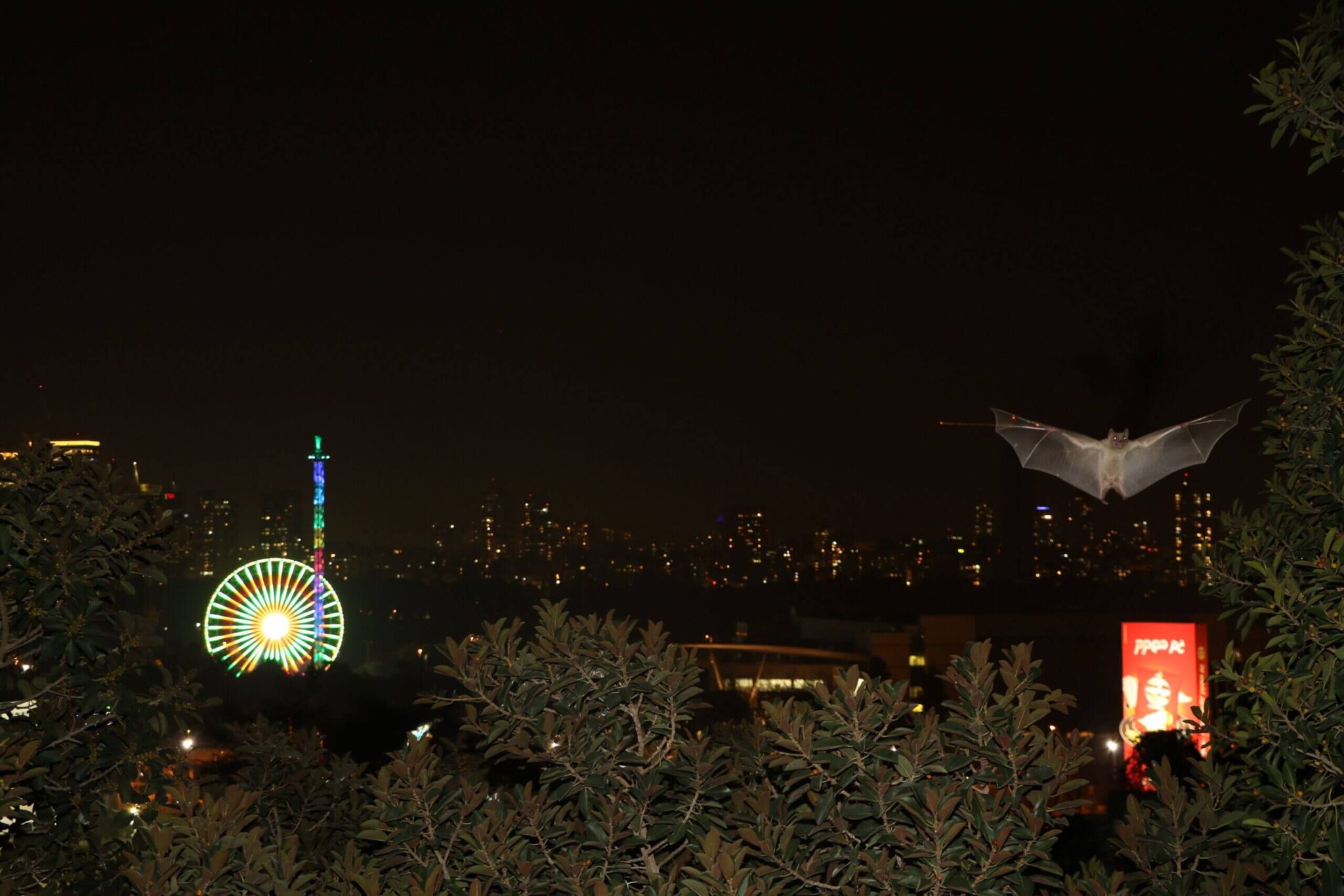The researchers found that when fruit bats feed in the city (Tel Aviv) they are much more inquisitive, they enjoy the urban abundance, visit a variety of fruit trees every night and taste as many diverse foods as possible. In contrast, the village bats that live in Beit Govrin focus each night on only one or two fruit trees

A new study by Tel Aviv University found that, similar to humans, the city bats who live in Tel Aviv like to enjoy the abundance and the rich food menu that the city offers them, in contrast to the village bats who live in Beit Govrin are satisfied with little, and only one type of food. The research was conducted under the leadership of research student Katia Eggert-Berg, under the direction of Prof. Yossi Yuval, head of the Segol School of Neuroscience, member of the School of Zoology in the Faculty of Life Sciences, and the Steinhardt Museum of Nature, Tel Aviv University. The study was published in the journalB.M.C. Biology .
The researchers explain that despite the increase in the urbanization process, which keeps most animals away from the city, there are animals that thrive even within the urban area. So for example, the fruit bats. These bats, similar to humans, live in a variety of living environments - in the city, in the village, and there are even some that feed in the city and sleep in the village.
The urban environment is fundamentally different from the rural environment in terms of food variety and accessibility. Although the city has a greater variety of trees per unit area, there are many challenges that bats have to deal with such as buildings and humans. This is in contrast to the village, where most of the trees are concentrated in orchards without barriers, but with less variety - the trees are mostly of one type. Because of the substantial environmental difference in the distribution and variety of fruit trees between the city and the village, the nature of the movement of the bats when searching for food trees in these areas is different.
In the new study, the researchers compared the nature of the movement of village bats and city bats while searching for food. The researchers used tiny GPS devices to follow urban and rural bats to test whether the nature of their movement while searching for food is influenced by their living environment or the environment in which they forage.
The researchers found that when fruit bats feed in the city they are much more inquisitive, they enjoy the urban abundance, visit a variety of fruit trees every night and want to taste as many diverse foods as possible. In contrast, the village bats focus each night on only one or two fruit trees. In addition, the researchers also found that in the group of bats of the Hellenic village in rural areas, there were many who left the village every night in order to search for food in the city and at the end of the meal returned back to sleep in the village. These bats, which fed in the city and returned to the village, had the same flight characteristics, during their stay in the city, as the bats that live in the city throughout the hours of the day.
According to the research findings, the researchers estimate that even bats that live their whole lives in a rural environment will be able to navigate an urban and industrialized environment. According to the researchers, there are flexible species, in which the ability to navigate in a new and unfamiliar environment such as an urban environment is an acquired ability. Such species, including for example the fruit bats, will in many cases succeed in adapting to life in urban areas.
Prof. Yuval: "How animals deal with urbanization is one of the central and important questions in ecological research today. Understanding how animals adapt to urban areas can help us in their conservation efforts. The urban area is characterized by a lot of fragmentation and today we only have a little understanding of how the animals, especially small animals move, and even fly, like the bats, in such an area."
More of the topic in Hayadan:
